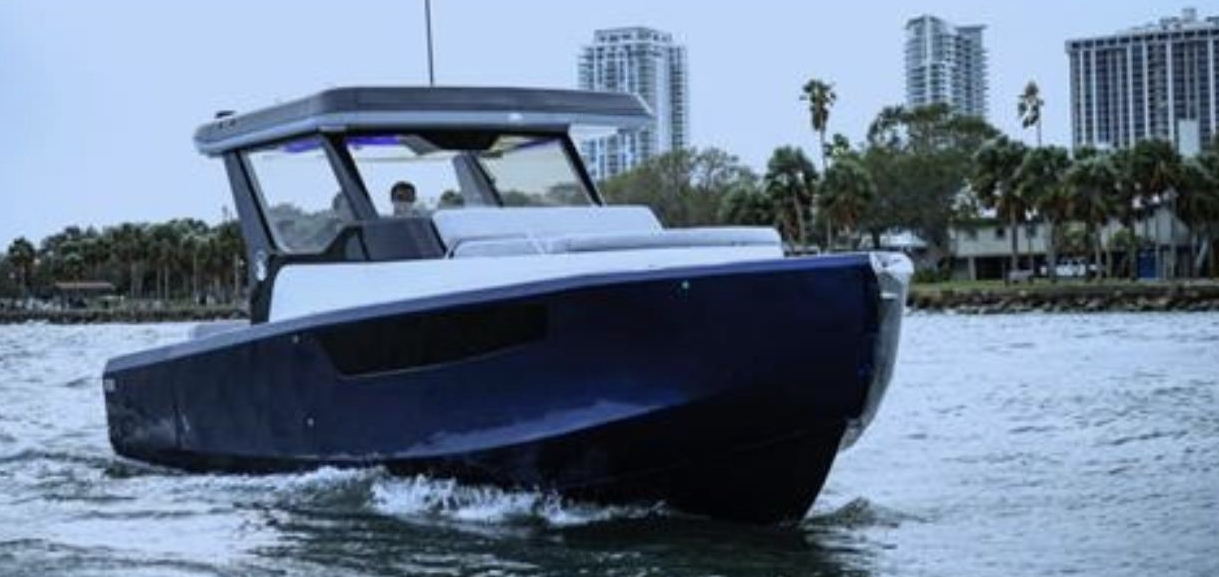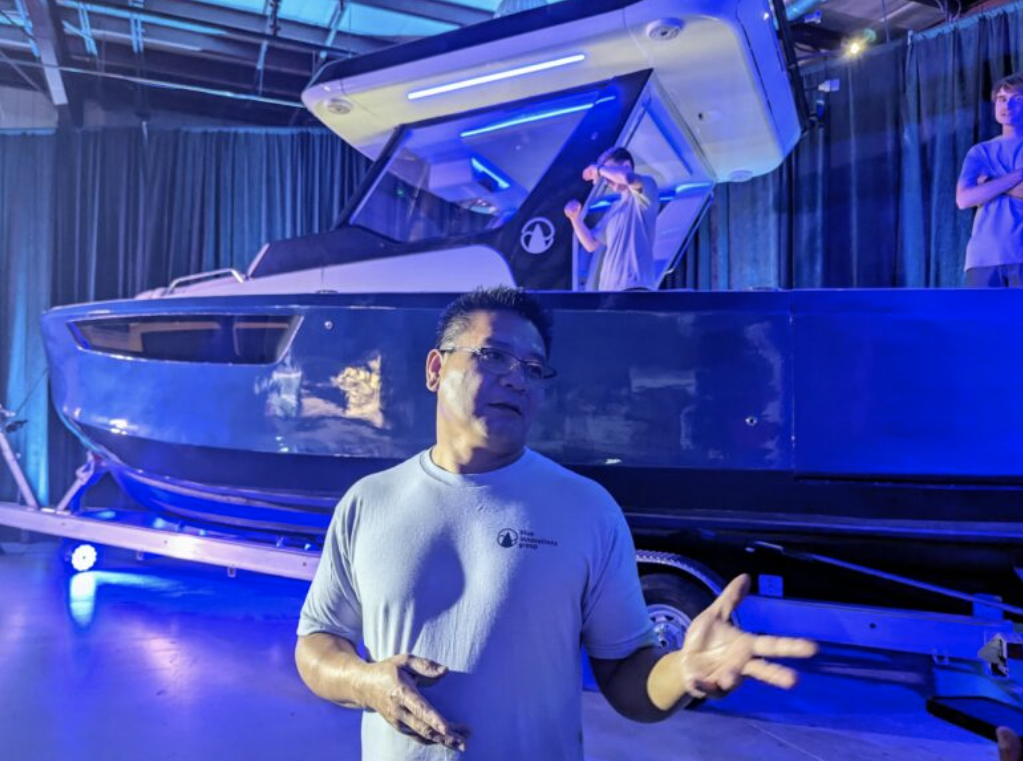Tesla’s Former Head of Global Manufacturing Launches New 30ft Electric Boat
John Vo forecasts building a partially automated “mega-factory” in two years to build one boat every 30 minutes
The electric-boat segment has been moving along slowly, with small builders on both sides of the Atlantic introducing one-off products. Some Swedish builders like X-Shore and Candela are building them on a small production line, but all the other builders are creating one-offs in small facilities.
One startup, founded by a former Tesla executive, has plans to scale up to more than 500 units per year by 2026 with a “mega-factory” in Florida. John Vo, the former head of global manufacturing for Tesla, as well as a former executive at Honeywell’s aerospace division and other startup companies, has big plans for his $300,000 R30.

John Vo, former head of global manufacturing for Tesla, has big plans for his US$300,00 R30. He plans to start at 300 to 500 models per year, depending on market conditions, and then grow the business.
Next year, Vo plans to build 10 to 15 new R30s from a Tampa Bay, Florida facility. But a year later, he plans to launch a mega-factory capable of building one R3 every 30 minutes. For the boating industry, that’s equivalent to light speed.
Vo plans to start at 300 to 500 models per year, depending on market conditions, and then grow the business. “When you talk about 10,000 boats per year, that’s a pretty high volume,” says Vo. “But in automotive, that’s still extremely low. We can’t just copy the Tesla formula, because we can’t afford to – you can’t just invest a lot of money to create that volume. Instead, we’re creating a new kind of process for manufacturing.”
Blue Innovation Group will be copying the Tesla manufacturing model to some degree, but not that closely. The team will use robotics to oversee the human labour force. “It’s going to take us some years to achieve the volume we want, so the key is to have an automated system to process the quality and costs, and at the same time keep the capital investment low.”
Vertical integration, where the company develops every part of the boat – the motors, battery types, software, helm station and other components – in-house will also be key to its success. The company will be using Lithium Iron Phosphate (LFP) batteries, which are safer and have a longer life cycle than the batteries used in most electric vehicles. “We’re using automotive learning for safety not just in the mechanical construction, but in thermal management and the battery management systems.”

The R30, with its aluminium hull, cabin, hardtop and three foldout platforms at the stern, is a very different design among the current crop of electric boats, which are only now starting to gain a foothold in mainstream boating. The R30, weighing 10,000 lbs, has an almost New England look with its navy-blue hull and hardtop. At the stern, platforms fold out on both sides and at the transom. The cabin has a dining table that converts to a double berth, enclosed head as well as a galley with fridge, sink and cooktop.
The electric inboard motors develop a peak power of 800hp, giving the boat a maximum speed of 45mph. The motors are powered by a 221kWh battery bank that Blue Innovation developed for the boating sector. At a speed of 15 to 20mph, the R30 has a range of 100 miles, with a potential run time of six to eight hours. It also has fast-charging capabilities, with four hours of running time after a 40-minute charge. Solar panels on the hardtop will slow-charge the vessel to about 50% of peak power when the boat is not running.
The company chose aluminium for the hull several reasons. “The first is recyclability which you can’t do with fibreglass, and the second is that it works for automation,” says Vo. The design team also went with an inboard engine configuration because it won’t clutter up the stern of the boat with large outboards. “The draft is still only 24 inches,” he says.
The steering is controlled via the propellers, thanks to Blue Innovation’s software, rather than rudders. The helm and electronics were also developed in-house. “The helm was designed to provide a more automotive experience that is intuitive,” said one of the designers. “The idea is to make data gathering less overwhelming for boaters who might be less experienced.”
Vo said the two-year ramp up towards mass production will give the company time to get its automated production and financing systems in place as it moves towards building the first 15 models next year. The company has adopted a reservation system from Tesla, which allows potential buyers to put down a $5,000 deposit for a production slot, but the deposits are fully refundable.
So far, Vo has been happy with the pace of the company’s development and, while he declines to give a hard figure, says that the investment amount is about half of what he had forecasted two years ago when he launched the startup. “The vertical integration will allow us to move at speed,” he says. “We also see the possibility of other OEMs or boatbuilders wanting our drive unit. We really want to have a revolution and make things better.”